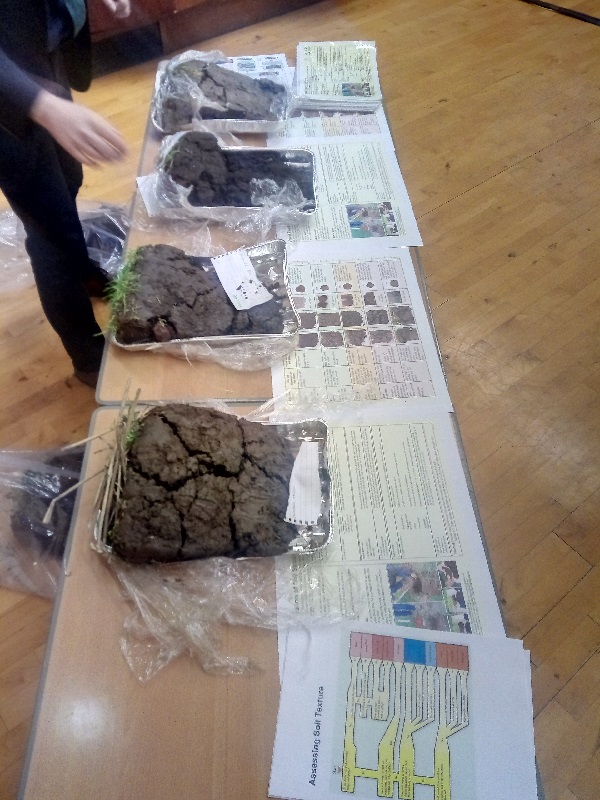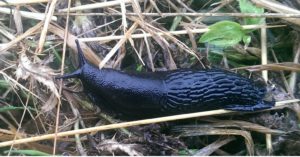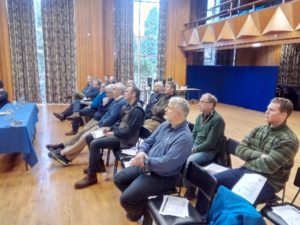Integrated Crop Management Roadshow: Fife – Event Summary
25 January 2018Integrated Crop Management – a more holistic approach that can benefit your farm yields
This roadshow event was held at the Elmwood campus of SRUC on 25th January 2018 with the following guest speakers:
Dr A Evans – Pests
Andy opened this event with a detailed look at control options for the main arable and grassland pests such as slugs, leather jackets and aphids. The days of simply reaching for the bag of slug pellets or bottle of insecticide to manage common crop pests are now over. The use of cultural approcahes such as soil management, use of traps, or sampling for the pest to assess the risk are necessary as part of an integrated pest managment (IPM) approach that limits the risks of environmental contamination by pesticides (e.g. methaldehyde in drinking water catchments) and protects the biodiversity of our farmland. You can read the slides from Andy’s presentation here.
Dr Paul Hargreaves – Soils & Integrated Crop Management
Paul led an interactive session about soils, and how integrated crop management can reduce damage to soil structure and can lead to increases in yields. You can read Paul’s presentation slides here.
As the basis of crop growth, soil is an important place to start to ensure efficient and improved yield. Knowing the type of soil you are working with, although it cannot be changed ea sily, will help in taking the correct management decisions.
sily, will help in taking the correct management decisions.
Structural damage of the soil through compaction results in a reduction in yield, this has been shown to be between 5 and 15% for root and cereal crops, depending on the severity of compaction. However, research into two compaction types, animal trampling or tractor traffic, in grassland showed a reduction in silage yield of between 6% for trampled compaction and 14% for tractor compaction over a three year period. Visual assessment of your soil can help evaluate the extent of any damage and provide help with management decisions to correct the problems. Methods of returning structure to the soil needs to address the problem areas and may not show dramatic yield improvements in grassland. Controlled traffic, in grassland, could be one way of reducing yield loss from compaction by an average of 13%.
Biological activity within the soilis essential to providing sustainable yields, with earthworm numbers a good indication of soil health.
Regular soil analysis will identify potential lack of nutrients that will reduce yield. This, linked with and understanding of the crop off-takes allows the more effective application of fertilisers, with less loss and potential pollution.
Dr Henry Creisson – Crop rotation and Integrated Pest Management
Integrated Pest Management (IPM) strategies utilize an optimal mix of pest control techniques and tools, taking into account profit; risk; safety and sustainability. IPM is not about throwing everything at the problem. It is about a considered approach to dealing with the issue and should be tailored to individual farms/businesses depending on the challenges to crops in terms of soil, environment, weed, pest and disease burden. Specific pests, weeds and disease problems require different approaches. During this meetin, Henry discussed examples of when a multi pronged attack would be recommended as well as examples of when a more simplified approach would be optimal for the control of specific cereal diseases. You can read his presentation slides here.
Key Points
- Understand the biologiy of the pest/disease/weed you are trying to control
- Select suitable combinations of control measures to tackle your specific set of issues
- Keep monitoring the problem, evaluating control measures and keeping records
- Completing an IPM plan for your own farm/business will help you focus your efforts
- Undertake a VESS to determine your soil type & assess soil structure to ensure you are making correct management decisions for your farm
- Know what soil structural damage you are aiming to rectify to ensure you are taking the correct approach.
- Prevention is better than cure – could your farm system operate controlled trafficking to prevent soil structure damage and reduced yields?
![]()
Improved soil management through ICM can improve nutrient usage. This can benefit the farm business financially whilst reducing environmental pollution risks, protecting water quality & reduce green house gas emissions. For Practical Guides, Case Studies, & information on our Focus Farms and ideas of how to benefit your farm, visit
Farming For a Better Climate
- Valuing Your Soils – Practical Guidance for Scottish Farmers
- This brochure includes useful information about Scotland's agricultural soils and practical advice outlining the upfront financial savings and business benefits of better soil management and the efficient use of resources. Action and problem-specific 'field-sheets' are designed for busy farmers with limited time for reading.
- Topics: Climate Change, Soils, Water Management and Crops and Soils
- Visual Evaluation of Soil Structure (VESS) Score Chart
- This is a downloadable copy of the Visual Evaluation of Soil Structure (VESS) score chart for use in-field.
- Topics: Soils
Sign up to the FAS newsletter
Receive updates on news, events and publications from Scotland’s Farm Advisory Service


